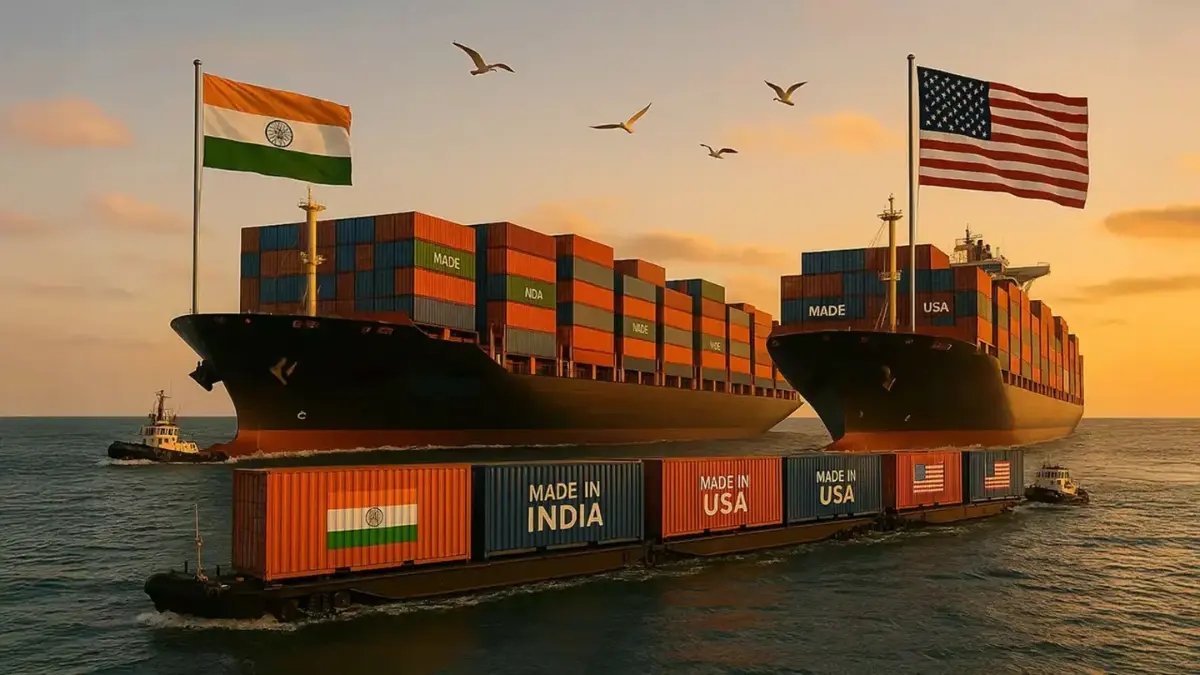
The global trade environment is changing quickly as a result of President Donald Trump’s broad tariffs, which upend established supply lines and compel countries to reconsider their economic policies. India and China, two Asian powerhouses that are currently reacting to the crisis in rather different ways, are among those most impacted.
The effects on both nations are becoming more apparent as Washington gets ready to impose further tariffs in August, presenting both fresh threats and possibilities for certain nations.
India Urged to Exercise Caution in Trade Talks with US Amid Rising Global Tensions
India Sees New Openings in U.S. Market

India seems to be improving as a result of the trade realignment brought on by US tariffs. In 22 of the 30 biggest global product categories (at the HS-2 level), Indian exports are now far more competitive, according to a research from NITI Aayog, India’s leading public policy think tank. All of these categories add up to a worldwide trade market valued at more than $2.28 trillion.
In the areas of clothing, electronics, furniture, plastics, and seafood, India stands to gain the most. Products from China, Mexico, and Canada are becoming more expensive due to U.S. tariffs, and Indian manufacturers are becoming attractive substitutes for American consumers.
Trade data supports this pattern. In April and May of this year, India’s exports to the United States increased by 21.78% to $17.25 billion, while U.S. imports increased by 25.8% to $8.87 billion.
In a fresh round of negotiations in Washington, New Delhi is pressing for tariff relief in industries including steel, aluminium, and autos. But in delicate areas like dairy, India has refused to compromise, upholding its longstanding obligations under World Trade Organisation (WTO) regulations.
According to NITI Aayog, Indian products currently have a price advantage in 78 product categories, which combined make up more than 25% of U.S. imports and more than half of India’s exports. This presents Indian firms with a unique chance to expand their presence in one of the biggest consumer marketplaces globally.
Trump Announces 35% Tariff on Canadian Imports, Expands Trade War with New Global Tariffs
China Races Against Tariff Clock

On the other hand, China is facing pressure. As the new U.S. tariffs are set to take effect on August 12, Chinese exporters have hastened shipments in an effort to evade the new taxes. Because of this, China’s exports jumped 5.8% year over year in June, while imports, which had decreased in May, increased by a moderate 1.1%.
After discussions in Geneva this past May, there was a brief easing of trade tensions between the United States and China, but now there is confusion again. Vietnam is a common route for Chinese companies attempting to get around current trade restrictions, and the Trump administration is thinking about imposing duties on commodities shipped through third nations like Vietnam. Additionally, a 10% import tax from China and the other BRICS countries is being discussed.
Analysts caution that these actions may make it more difficult for China to redirect goods, a tactic it has used more and more throughout the trade battle. The new tariffs have the potential to significantly limit access to Chinese trade and raise the cost of conducting business internationally if they are put into effect.
Although China’s trade surplus increased from $103.22 billion in May to $114.7 billion in June, the overall outlook is still difficult. The European Union has also criticised China, accusing Beijing of contributing to global economic overcapacity and undermining Western sanctions against Russia, in addition to tensions with the United States.
Trump’s BRICS Tariff Threat Casts Shadow Over India-US Trade Deal
Different Challenges, Different Strategies

China and India’s contrast demonstrates how nations with disparate economic backgrounds are adapting to the same external forces.
With less involvement in intricate global supply networks, India is grabbing the opportunity to become a more desirable trading partner for the United States. Now is the time to increase exports in important industries and gain negotiating power. But in order to maintain these advantages, India would have to make infrastructure investments, streamline regulations, and expand its export base.
China, a long-time leader in global manufacturing, is currently coping with escalating trade barriers, growing geopolitical tensions, and scrutiny of its trade policies. Growing opposition from the West is now restricting the speed, scale, and rerouting flexibility that formerly allowed it to dominate international trade.
Trump Quietly Expands Trade War Strategy Across Asia to Undermine China
Final note
China and India will have to make important choices in the coming months as U.S. trade policy continues to change. India may continue to gain in the near future, but its capacity to maintain its competitive edge will determine its long-term success. In the meantime, China will have to adapt to a world where political unrest is increasing and alternate economic routes are becoming less viable.
It is obvious that the laws of international commerce are changing, and the countries that are best positioned to prosper in the new system will be those that adjust swiftly and intelligently.
